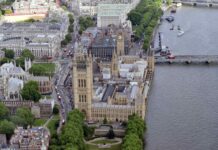Beyond compliance: unlocking the hidden potential of your SECR reporting
For most organisations in scope of the Streamlined Energy and Carbon Reporting (SECR) regulations, the task of preparing your first energy and carbon report is well under way. Because SECR is a mandatory scheme, any organisation that takes regulatory compliance seriously will be doing everything they can to meet its requirements. But this focus on compliance may mean that you miss some of the opportunities that SECR offers. Here’s a quick guide to harnessing your SECR report to drive positive change in your organisation.
It’s your data – use it!
The first set of SECR reports cover the financial year that ended on 31st March 2020, so your business will already have collected a year’s worth of data on its energy use and associated carbon emissions. This valuable data has uses way beyond just ticking a compliance box. Data collected for SECR purposes can be used to identify areas of energy waste and potential savings. There may be some simple changes you could make to cut costs and your carbon footprint at the same time. Even if you don’t act on what you find, your SECR data gives you a clear picture of exactly which areas of your business are using the most energy, so you have the information you need to make better decisions.
Report in a format that’s meaningful to you
SECR requires details of your organisation’s total energy consumption and associated greenhouse gas emissions, but how meaningful are these overall totals to you or others within the business? You will already have been gathering data from all areas of the organisation, so why not break down your reporting by different departments, or by different sites? You are free to choose ways of tailoring your data that are meaningful to your business. It will also help to drive engagement within the organisation if people can see for the first time how their specific department or site is doing compared to others.
Engage more areas of the business
Many organisations have put someone in charge of overall SECR compliance, and the temptation is to leave them to it because everybody else is too busy to get involved. It is much better to treat SECR as a company-wide exercise and an opportunity to engage people in a shared project.
A key part of the data-gathering stage is to allocate responsibilities for gathering the data on each emissions source. For example, the manager of each site might be responsible for gathering data on their own site’s energy use and associated emissions, while the fleet manager might handle the data on vehicle fuel use. Since you are already effectively pulling together a SECR team, why not treat it as such and use the exercise as an opportunity for different areas of the business to talk to each other about energy and carbon saving opportunities? SECR cuts across many areas, including compliance, financial reporting, energy use, site management and sustainability. It is a golden opportunity to get different areas of the business working together.
Go beyond the minimum
SECR requires you to report on the emissions that come under Scope 1 (direct emissions) and Scope 2 (emissions from the energy you buy and use). But increasing numbers of organisations are also choosing to measure and report on their Scope 3 emissions – that is, emissions from sources connected to your business rather than emitted by the organisation itself. Scope 3 emissions usually make up the biggest share of emissions connected to a business.
Currently, only one type of Scope 3 emissions is compulsory to report (business travel in certain circumstances) and it isn’t compulsory for all businesses under Scope 3. But Scope 3 reporting is strongly encouraged and likely to become mandatory in future. Why not future-proof your business by getting to grips with the process now? Stakeholders increasingly expect businesses to be proactive on their carbon emissions, and those who just do the legal minimum are exposing themselves to reputational risk.
Take your first steps towards net zero
Many organisations that have to comply with SECR have never done an energy and carbon emissions report before, so this is the first time that they are getting an accurate picture of their own carbon footprint. This may bring surprises – perhaps a specific area of the business has a disproportionate level of emissions, or perhaps the company-wide carbon footprint is not what you assumed it was.
Actually seeing what your emissions are is a powerful driver for change. Many businesses, having gathered the data that they need to include in their SECR report, will naturally be looking for ways to reduce their energy use and carbon emissions. The data gives you an accurate baseline, so you can measure future reductions against this. It may be too daunting to set a net zero target immediately, but you now have a starting point for an emissions reduction strategy.













